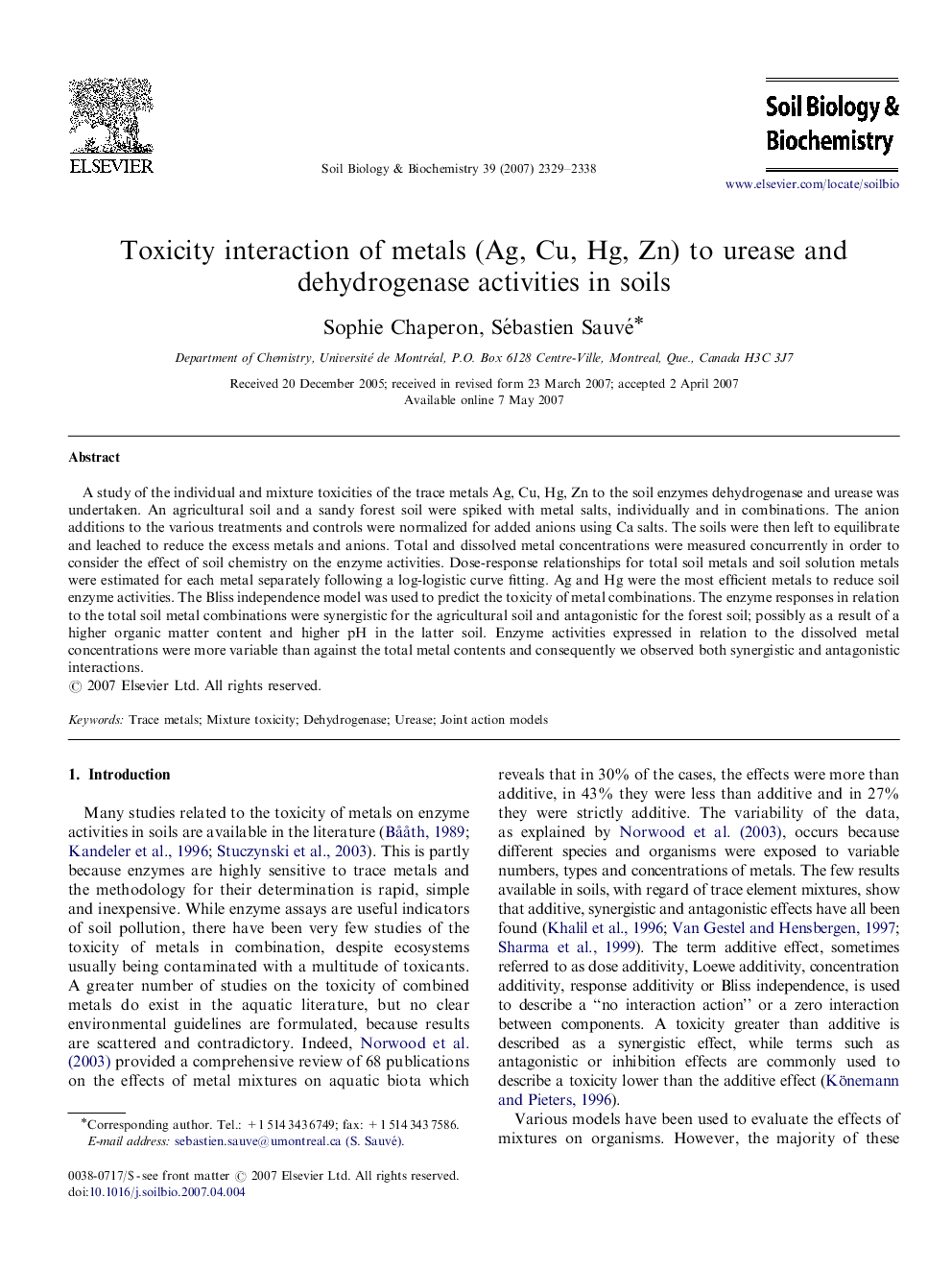| Article ID | Journal | Published Year | Pages | File Type |
|---|---|---|---|---|
| 2026188 | Soil Biology and Biochemistry | 2007 | 10 Pages |
A study of the individual and mixture toxicities of the trace metals Ag, Cu, Hg, Zn to the soil enzymes dehydrogenase and urease was undertaken. An agricultural soil and a sandy forest soil were spiked with metal salts, individually and in combinations. The anion additions to the various treatments and controls were normalized for added anions using Ca salts. The soils were then left to equilibrate and leached to reduce the excess metals and anions. Total and dissolved metal concentrations were measured concurrently in order to consider the effect of soil chemistry on the enzyme activities. Dose-response relationships for total soil metals and soil solution metals were estimated for each metal separately following a log-logistic curve fitting. Ag and Hg were the most efficient metals to reduce soil enzyme activities. The Bliss independence model was used to predict the toxicity of metal combinations. The enzyme responses in relation to the total soil metal combinations were synergistic for the agricultural soil and antagonistic for the forest soil; possibly as a result of a higher organic matter content and higher pH in the latter soil. Enzyme activities expressed in relation to the dissolved metal concentrations were more variable than against the total metal contents and consequently we observed both synergistic and antagonistic interactions.
